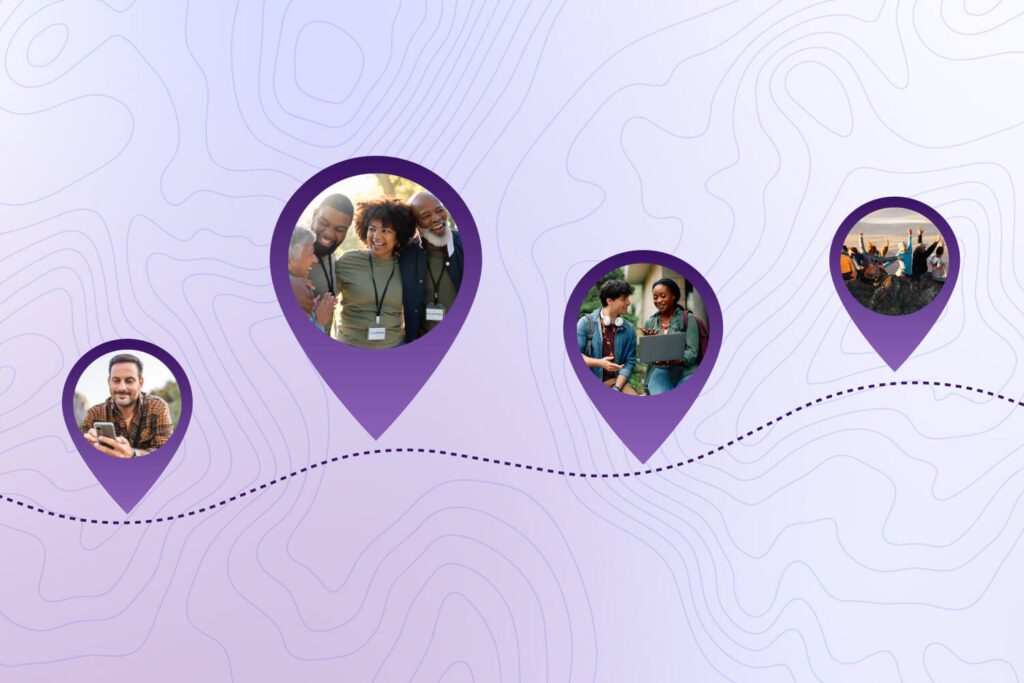3 ways to elevate major gifts and planned giving with data

Major and planned gifts are crucial sources of funding for nonprofit organizations, and both types of donations require thoughtful prospect research and solicitation strategies. However, many nonprofits’ strategies rely on outdated tools that can hamper these efforts.
This is why data-informed donor screening and segmentation practices are so important. With the right tools and practices, your team can optimize fundraising efforts to raise more money, spend fewer resources, and increase your impact on the communities you serve. Here’s how—and why—your nonprofit can elevate your donor management practices to create cutting-edge, data-driven major gifts and planned giving programs.
Data’s impact on major gifts and planned giving
The right donor data can provide a full picture of donors’ capacity and affinity to give, allowing you to target the right donors for your major gifts and planned giving programs. Nonprofits often focus on data like donor net worth or income, but this information only provides limited insights. Even if you know a donor’s income, do you understand their expenses or current net worth?
Consider one donor, Janet, who earns $300,000 per year, and another donor, Bethany, earning $200,000. Based solely on income, Janet might seem a more promising prospect. But what if she has $250,000 in annual expenses, while Bethany only has $100,000 in expenses? Now, Bethany has more capacity to give.
Many nonprofits use outdated strategies that don’t take details like these into account. Fortunately, with the right tools and practices, you can tap into more nuanced information and use data to more effectively screen and segment donors.
3 techniques for effective data-driven decision-making
Whether you’re looking to acquire new donors or retain or upgrade existing ones, using data to optimize your asks can help you reach the right supporters at the right time. The more personalized each donor’s ask is to their specific capacity and affinity to give, the more effective your ask becomes.
Segmenting by income data is an effective start, but it’s only a start—income alone misses other nuances of a donor’s ability to give. Use these three techniques to uncover the right data and use it to guide your decision-making:
1. Uncover donors without children
The ideal fundraising system leaves no donor behind. That said, some donors are more likely to give, and to give more, than others. Donors without children, in particular, often have more capacity to give.
Beyond supporting their children now, many parents want to leave behind substantial inheritances to help ensure that children, grandchildren, and future generations prosper. Many people without children also want future generations to prosper, so they fund nonprofits and social programs.
With the right prospect research tools, you can uncover these donors and offer them an avenue for ensuring that the resources they provide are put to good work today and well into the future.
2. Identify donors with donor-advised funds and estate planning
Another useful way to screen supporters for major and planned giving is to uncover donors with donor-advised funds (DAFs) and those engaged in estate planning. Here’s what these reveal about your donors’ capacity and affinity to give:
- DAFs mean that donors already have a dedicated fund in place to make donating to nonprofits and securing tax benefits easier. This suggests that the donors are committed to donating large amounts of money to charitable causes over time.
- Estate planning, which is when donors have set up trusts and other financial vehicles, suggests that the donors are serious about giving and ensuring that their funds are put to good use. These donors could be good candidates for your planned giving program.
Understanding your donors and the tools they already have at their disposal will help you craft better requests and strengthen relationships. You can also focus more of your efforts on donors who are ready to act immediately.
3. Leverage career insights to better understand donors
With specialized data services, you can also leverage career data including job titles, employers, and other resume insights to find eligible donors for your major and planned gifts. Here are a few examples of how your nonprofit can leverage career insights:
- Charitable interests: Career data can help you understand a donor’s interests, allowing you to tailor asks to their preferences. For example, if someone works for a company with a major focus on sustainability, there’s a good chance that they’re passionate about sustainability. Requests centered around sustainability initiatives may gain more traction.
- Bonus schedules: With some research, you might uncover more nuanced insights, such as when companies award performance bonuses. If a potential donor recently received a bonus, they may be able to more easily afford donations. Time your asks around these schedules to increase your chances of success.
- Industry busy seasons: Money is only one aspect of giving. Many people are willing to donate time and energy when their work schedule allows it. By understanding the busy seasons and cycles of different industries, you can identify the right times to ask different supporters to volunteer. For example, someone working in the accounting field may not have much spare time during tax season, but they may have plenty of time to volunteer in the summer.
By better understanding your supporters with career data, you can improve both your fundraising appeals and your interactions with them, which helps you advance your purpose.
Putting donor data to work for major gifts and planned giving
By using data platforms built by data scientists and designed specifically for fundraising, you can put your organization in the best position to successfully steward major and planned gifts. When your organization uses data efficiently, especially when paired with unified fundraising and engagement, your nonprofit can act on that data across all your supporter interactions to advance your purpose.
Ready to Get Started?
Work with Bonterra



